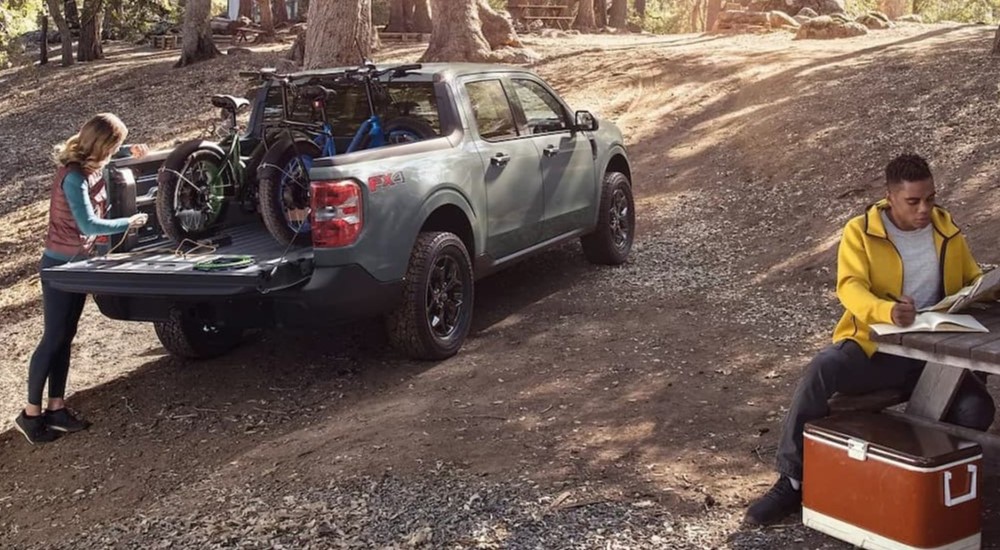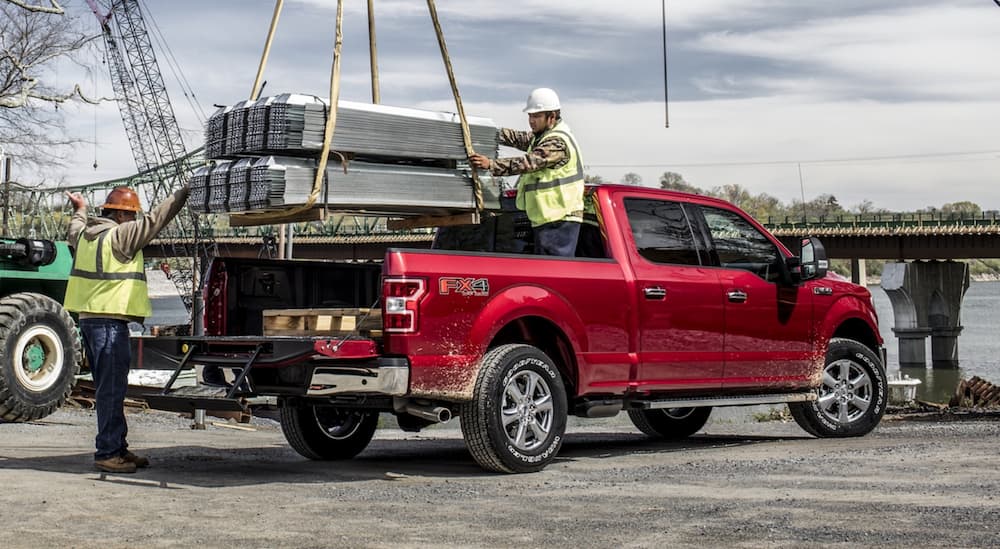Maintaining your truck is on every trucker’s mind. You spent your hard-earned money on a good F-150, a Maverick, a Ranger, or a Super Duty from a used Ford truck dealer, and you want to keep that used Ford running for as long as you can. There are some very basic tasks you can carry out regularly to ensure that your used truck runs as well as it can and that you can get the most out of it without having to spend an arm and a leg to do so. Many of the maintenance needs to keep the truck running can be done without requiring lots of big equipment or lots of expenses, and the investment in the truck can pay off in dividends that you can rely on for hundreds of thousands of miles with some proper care.
Air Filters, Oil Filters, and Line Care
One of the most basic maintenance requirements for your used truck is keeping the filters in check. You have air filters that can be easily replaced for the vehicle, and for most Ford trucks, you’re looking at needing to replace the filters every 15,000 through 20,000 miles, depending on how frequently you use the vehicle. If your used truck is your daily driver, then it will likely need to be replaced more frequently than a truck you only drive occasionally.
The same should apply to your oil filter as well. If you do a lot of heavy towing, trailering, or hauling in your F-Series Super Duty, you may have to replace your oil filter more frequently. If you only casually drive your midsize Ford truck, you might go 5,000 miles before having to replace the oil filter, but more frequent use may require you to change the oil filter every 3,000 to 4,000 miles. Usually, it’s important to change the oil filter shortly after an oil change just to keep things in sync.
When it comes to lines, such as fuel lines and brake lines, it is obvious to tell if they aren’t working, as you’ll experience delays in braking or stutters in acceleration. Alternatively, if you notice leaks, then it’s necessary to have the hose replaced. In that case, it’s probably best to have a certified mechanic take a look at your truck if you notice any issues with any of your hoses or lines. You should also replace the coolant every 100,000 miles or so.
Replacing Spark Plugs and Charging the Battery
Whether you have an EcoBoost, a PowerBoost, a Coyote, a Predator, or a Power Stroke engine in your truck, there are still some basic maintenance needs that each of the powertrains requires to keep operating. For instance, every 15,000 to 30,000 miles, you should inspect your spark plugs, make sure your engine can properly start, that the plugs aren’t burned out and that the truck isn’t jittery during idling. Obviously, depending on how often you use your vehicle and how much roughhousing your truck goes through, especially if it’s for off-road use, will depend on how frequently you need to change the spark plugs. However, every 60,000 to 100,000 miles the spark plugs should be replaced.
Additionally, you will need to keep the battery charged so that you can make use of all of the truck’s functionality, from infotainment and convenience to utility and comfort features. It’s important to at least check and test your battery twice a year. Even if the battery seems to be functioning well, testing it once during the summer and during the winter is a good way to ensure that it’s operating up to its expected standards. If you notice that the battery is draining or you’re having trouble getting the vehicle to start, or certain features are not working, it’s time to get the battery charged or changed.

Tire Rotations and Brake Pads
Tire rotations should happen according to the vehicle’s drivetrain. If you have a used Ford that’s light-duty and rear-wheel drive, you can likely opt to rotate the tires between 5,000 and 10,000 miles, depending on the frequency of use. If you have an F-150 or Super Duty with four-wheel drive and you drive the vehicle frequently, you will likely want to rotate the tires every 3,000 through 5,000 miles. This is because there is more wear and tear being put on all four tires compared to a rear-wheel drive vehicle.
If you also want to keep your truck responsive on the road, you will also want to keep your brake pads working like new. Much like how rotating the tires helps maintain handling, keeping your brake pads in working order makes it more convenient for basic driving, hauling, and towing. You should replace the brake pads every 50,000 through 70,000 miles. If you notice that your rotors are in bad shape when replacing the brake pads, it won’t hurt to clean them or replace them when you put on the new pads.
Transmission Fluid and Oil Changes
If you want to keep your used truck, whether an F-150, F-250, or F-350, running like new, you need to care for the transmission as much as you do the engine. The transmission is just as important, and there are some easy methods for keeping both your engine and your transmission in great working order. When it comes to your transmission, you should regularly check the fluid every 30,000 miles if you do a lot of regular towing and trailering with your truck. If you don’t put your truck through heavy use frequently and only use your used Ford Ranger, Maverick, F-150, or Super Duty occasionally, you can go as far as 70,000 miles before you need to change the transmission fluid. Keeping the transmission running well is vital for keeping the truck operating like new, and that means keeping a check on the transmission fluid regularly.
Your engine oil should be changed regularly as well. Typically, it is every 5,000 miles if you have an older used truck and usually every 7,500 miles for newer Ford models. Regular engine oil changes will ensure that the truck runs well for many miles to come. If you have a used Ford truck, whether it be a midsize Maverick, a light-duty F-150, or a heavy-duty Super Duty, if they are newer generation trucks, they run best on synthetic motor oil but always be sure to check the owner’s manual before changing the oil.

Maintaining the Transfer Case and Axle Fluid
You can get many used Ford trucks in either rear-wheel or four-wheel drive, whether they’re midsize or full-size trucks. If you manage to get your hands on a four-wheel drive truck, you will have to maintain the transfer case. Keeping the truck running like new means keeping the transfer case fluid well-maintained. Just like with the transmission and engine, a well-maintained transfer case means that you can make full use of your four-wheel drive capabilities for a long time to come.
Typically, if you do plenty of off-road driving, checking the transfer case fluid every 60,000 miles is a safe bet, but it’s okay to go up to 100,000 miles before actually changing the transfer case fluid. You might also want to check and/or replace the front and rear axle fluid as well, giving you longevity on the vehicle and the ability to put more wear and tear on it for many years to come. It would also be wise around this time to change accessory or timing belts.
Basic Maintenance Goes a Long Way for a Used Ford Truck
While most owner manuals will suggest when to replace some parts or get maintenance for others, sometimes, when dealing with a used vehicle, it’s best to play it on the safe side and do inspections or have parts replaced several thousand miles ahead of schedule. Why? Well, for one, you don’t lose anything by being careful, and secondly, when you’re dealing with a used vehicle, the better you maintain it, the longer it will last. These kinds of regular service or maintenance intervals – whether you do the work yourself or bring it to the used Ford truck dealer where you bought it – can help keep the truck running like new, whether it’s a Maverick, a Raptor, a Ranger, an F-150, or a Super Duty. Keen and regular maintenance is a must if you want to get the most out of a used Ford truck.

